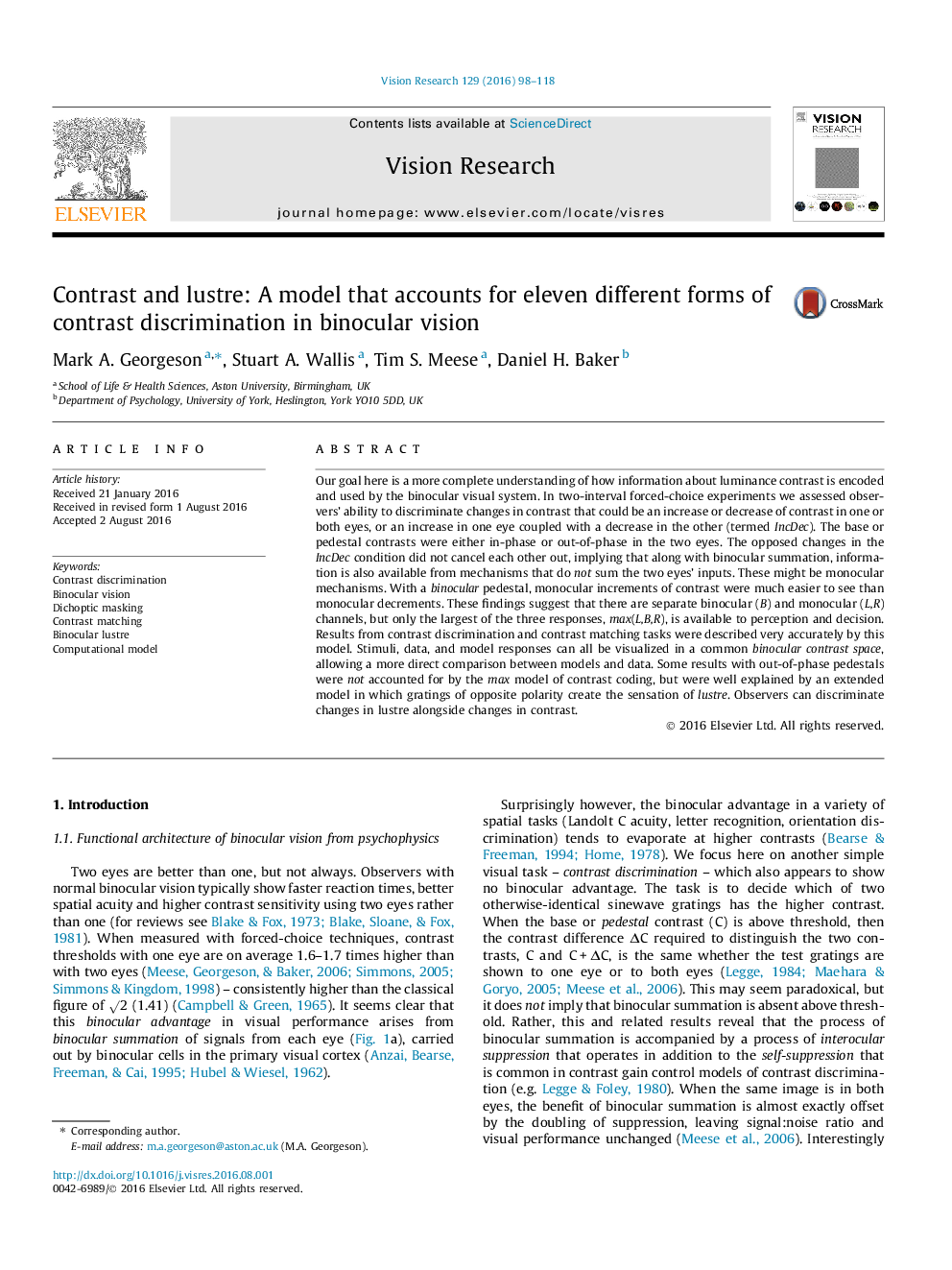| Article ID | Journal | Published Year | Pages | File Type |
|---|---|---|---|---|
| 5705962 | Vision Research | 2016 | 21 Pages |
Abstract
Our goal here is a more complete understanding of how information about luminance contrast is encoded and used by the binocular visual system. In two-interval forced-choice experiments we assessed observers' ability to discriminate changes in contrast that could be an increase or decrease of contrast in one or both eyes, or an increase in one eye coupled with a decrease in the other (termed IncDec). The base or pedestal contrasts were either in-phase or out-of-phase in the two eyes. The opposed changes in the IncDec condition did not cancel each other out, implying that along with binocular summation, information is also available from mechanisms that do not sum the two eyes' inputs. These might be monocular mechanisms. With a binocular pedestal, monocular increments of contrast were much easier to see than monocular decrements. These findings suggest that there are separate binocular (B) and monocular (L,R) channels, but only the largest of the three responses, max(L,B,R), is available to perception and decision. Results from contrast discrimination and contrast matching tasks were described very accurately by this model. Stimuli, data, and model responses can all be visualized in a common binocular contrast space, allowing a more direct comparison between models and data. Some results with out-of-phase pedestals were not accounted for by the max model of contrast coding, but were well explained by an extended model in which gratings of opposite polarity create the sensation of lustre. Observers can discriminate changes in lustre alongside changes in contrast.
Keywords
Related Topics
Life Sciences
Neuroscience
Sensory Systems
Authors
Mark A. Georgeson, Stuart A. Wallis, Tim S. Meese, Daniel H. Baker,
